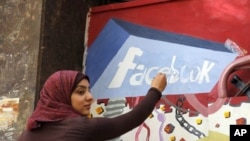"We are already seeing it across North Africa and the Middle East as a rising wave of young activists demand their rights and remake their world," U.S. Under Secretary of State for Public Diplomacy and Public Affairs Judith A. McHale said recently at the Institute of Peace in Washington, DC.
"This is a critical inflection point for these newly empowered youth, which makes this a critical moment for the United States to redouble our efforts to support and engage them."
The State Department's Bureau of Educational and Cultural Affairs maintains a wide range of exchanges between students, educators, artists, athletes, and emerging leaders in the United States and more than 160 countries.
Today, there are one million alumni of Department exchange programs, a network that includes more than 50 Nobel laureates, and more than 350 current or former government leaders. "Exchange participants quickly become citizen ambassadors," Under Secretary McHale said. "They create spaces for conversation and opportunities for cooperation while traveling abroad. And they build even larger communities of understanding when they return home."
Expanding and strengthening people-to-people relationships is a major pillar of public diplomacy. Under Secretary McHale said the Department of State is unwavering in its commitment to promote exchange opportunities through every possible venue, including face-to-face and using connective technology.
She noted the Internet has made it possible to reach more people in more places, and that Exchange 2.0 helps expand personal connections in several ways.
First, connective technologies allow the Department to scale up and adapt exchange programs to reach wider, more diverse audiences. Social media make it possible to create and maintain connections to communities that were unreachable before.
Second, social media provide a platform to sustain meaningful engagement with participants when they have completed their international exchange programs.
Third, new technologies make it possible to engage with young people where they live – whether online or on their mobile phone.
Fourth, social media enable us to keep up with events in the world at speeds in which they take place.
Finally, exchanges using social media technology cost relatively little to implement but can return large benefits.
"The path to understanding always takes a different route," Under Secretary McHale concluded. "But without fail, in every country and across every culture on earth, it starts with 'hello' and ends with 'go in peace, my friend.'"
Public Diplomacy and Social Media

Social media make it possible to create and maintain connections to communities that were unreachable before.

















